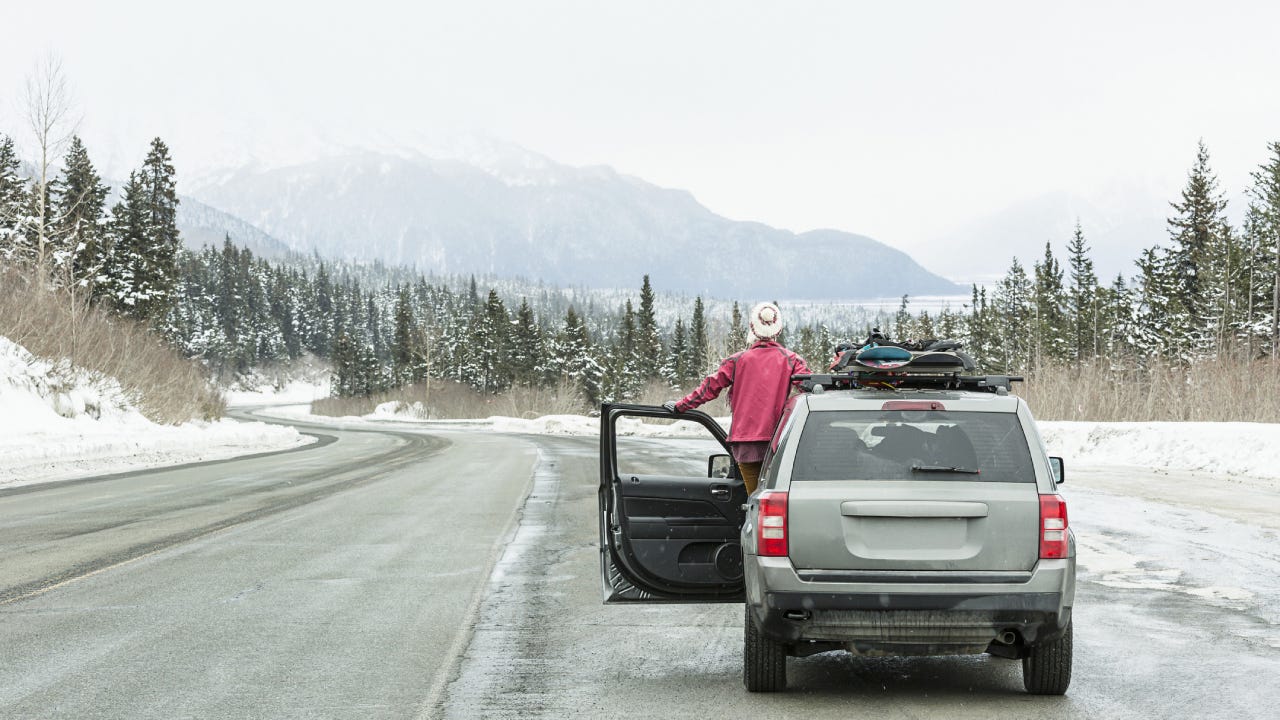The penalties for driving without insurance in Alaska

The Bankrate promise
At Bankrate, we strive to help you make smarter financial decisions. To help readers understand how insurance affects their finances, we have licensed insurance professionals on staff who have spent a combined 47 years in the auto, home and life insurance industries. While we adhere to strict , this post may contain references to products from our partners. Here's an explanation of . Our content is backed by Coverage.com, LLC, a licensed entity (NPN: 19966249). For more information, please see our .
[/media-credit]
Key takeaways
- Alaska has minimum mandatory insurance requirements, though the laws are not enforced in all regions of the state.
- Failing to provide proof of insurance can result in a range of penalties, including a $500 fine and possible license suspension.
- Alaska is an at-fault state, meaning the driver who is responsible for an accident is required to pay for any damage resulting from the incident.
Alaska is one of the least populated states in the U.S., which means its roads and highways have fewer drivers on them. While some people might be tempted to forgo insurance coverage because the chances of needing to file a claim are slim, it’s not advisable. Bankrate explains the state’s insurance requirements and penalties for going without coverage.
Is driving without insurance in Alaska illegal?
Insurance laws in Alaska require drivers to carry a minimum level of liability insurance when operating a vehicle in specific parts of the state, depending on where the car is registered. In addition to maintaining a minimum level of coverage, Alaska car insurance laws also mandate that drivers keep proof of insurance with them while on the road. The state’s financial responsibility law establishes penalties for drivers who are unable to provide proof of insurance.
Minimum insurance requirements in Alaska
Alaska’s mandatory insurance law sets the minimum level for auto liability insurance at the following:
- $50,000 bodily injury liability per person
- $100,000 bodily injury liability per accident
- $25,000 property damage liability per accident
Within the state, some regions don’t require drivers to register their vehicles. In these areas, driving with no insurance in Alaska is permitted. Alaska’s Department of Motor Vehicles (DMV) website provides a current list of the regions that are exempt from minimum insurance coverage.
Learn more: Best car insurance in Alaska
Penalties for driving without insurance in Alaska
The consequences in Alaska for driving without insurance depend on the circumstances. Here’s a breakdown of what to expect.
Failure to provide proof of insurance
Failure to provide proof of liability insurance to an Alaska law enforcement officer may result in a citation. Penalties vary, though, and the violation may also result in the impounding of your vehicle.
First offense
If you are caught driving without the requisite insurance under Alaska’s mandatory requirements, you may be subject to a $500 fine. For a first offense, your driver’s license may be suspended for up to 90 days.
Second offense
If a driver is issued a second citation for driving without insurance in Alaska within 10 years of the first, the license suspension may increase up to one year. Penalties will likely be at least $500, as well. Penalties and suspensions can get more severe with subsequent violations.
SR-22 requirement
If your license has been suspended for failure to carry the required insurance, you will need to obtain and hold an SR-22 for up to three years. This can typically remove the suspension. An SR-22 is a state-sanctioned certificate verifying financial responsibility.
Learn more: What are the different types of car insurance coverage?
Getting into an accident without insurance in Alaska
If you are involved in a car accident in Alaska that results in physical injury, death or property damage of over $501, you are required to show proof of insurance. Details of your insurance must be provided to the Alaska DMV within 15 days of the accident and must be provided by every driver involved in the incident regardless of who is at fault. Typically, the responding officer at the scene of the accident should provide forms for drivers to fill out and submit, but those forms can also be picked up from any DMV office.
If a driver fails to provide proof of insurance within 15 days, the DMV will suspend their license for a minimum of 90 days and up to a full year. The suspension is solely for driving without providing proof of insurance and is not reflective of whether or not the driver is at fault for the accident. Additional penalties may arise if the driver is deemed at fault. In some cases, drivers are able to apply for limited driving rights for things like work requirements, if necessary.
While the loss of a license can be a major penalty for drivers, it is not the most significant cost drivers may face. Alaska is an “at-fault” state, which means the driver deemed responsible for the accident can be held personally liable for bodily injury and property damage caused by the crash. Depending upon the severity, an at-fault accident while uninsured can lead to significant financial loss and potential bankruptcy.
Frequently asked questions
-
-
Driving without insurance is costly in its own right. Compounding the issue by providing false information to a law officer or your insurance company can make the situation much worse. Lying to an officer in Alaska can result in hefty fines and jail time. You may also discover that your car insurance company has denied a claim or canceled your policy if they learn that you provided false information on your application. Plus, the state can charge you with a misdemeanor or even a felony depending on the nature of the insurance fraud.
-
Car insurance in Alaska is relatively inexpensive compared to other states, averaging $2,336 a year for full coverage and $498 a year for minimum coverage, according to Bankrate’s 2024 study of quoted annual premiums from Quadrant Information Services. This is lower than the national average, which is $2,314 for full coverage and $644 for minimum coverage per year. Premiums will vary for every driver based on a number of personal factors that affect a driver’s rate. This can include driving history, age, location and car make and model. Experts recommended shopping around and comparing quotes to find the most affordable coverage.
-
An “at-fault” state, unlike a “no-fault” state, mandates that the individual deemed responsible for causing an accident is held financially accountable for injuries and damage resulting from that incident. This contrasts with “no-fault” states, where insurers typically cover their own insured’s injuries and may later seek reimbursement from the at-fault party or their insurance company. Regarding the question of whether Alaska is a no-fault state, it is not; Alaska operates as an “at-fault” state. This means that in Alaska, the person determined to be at fault in an accident is usually required to bear the costs associated with the damages.
-
When contemplating whether to inform your car insurance company about minor accidents, it’s typically wise to err on the side of caution. Even if the incident seems minor, unforeseen complications could arise later. For instance, the other party involved might claim a serious injury months or even years after the accident. In such cases, if you haven’t notified your insurer promptly, it might be less inclined to accept the claim due to the delay in reporting. Reporting the incident when it happens can help make sure that your provider has all the necessary information, which could be crucial for protecting your interests in the long run.
-
Related Articles



